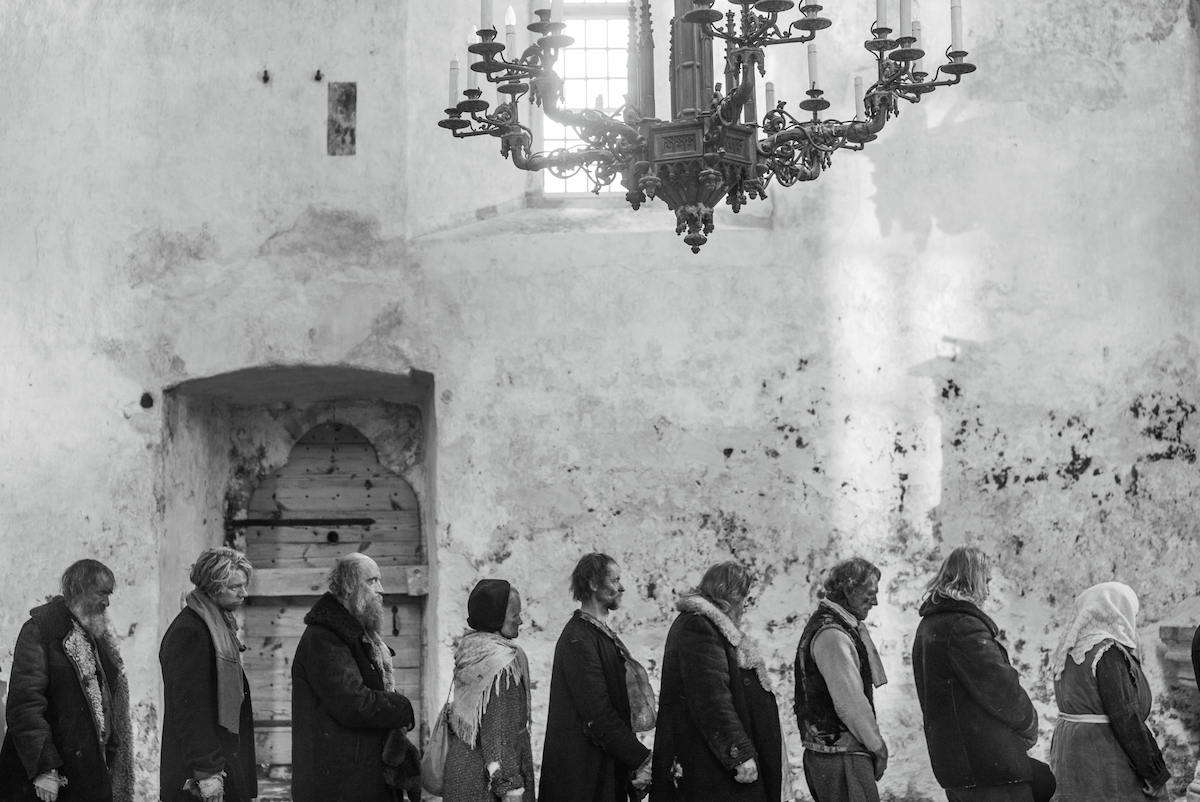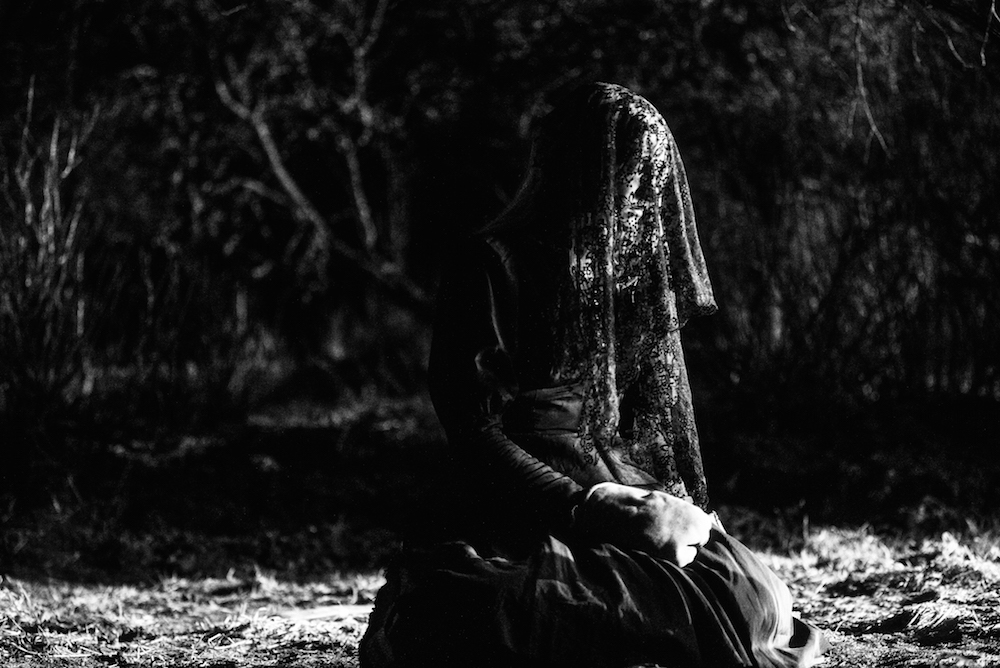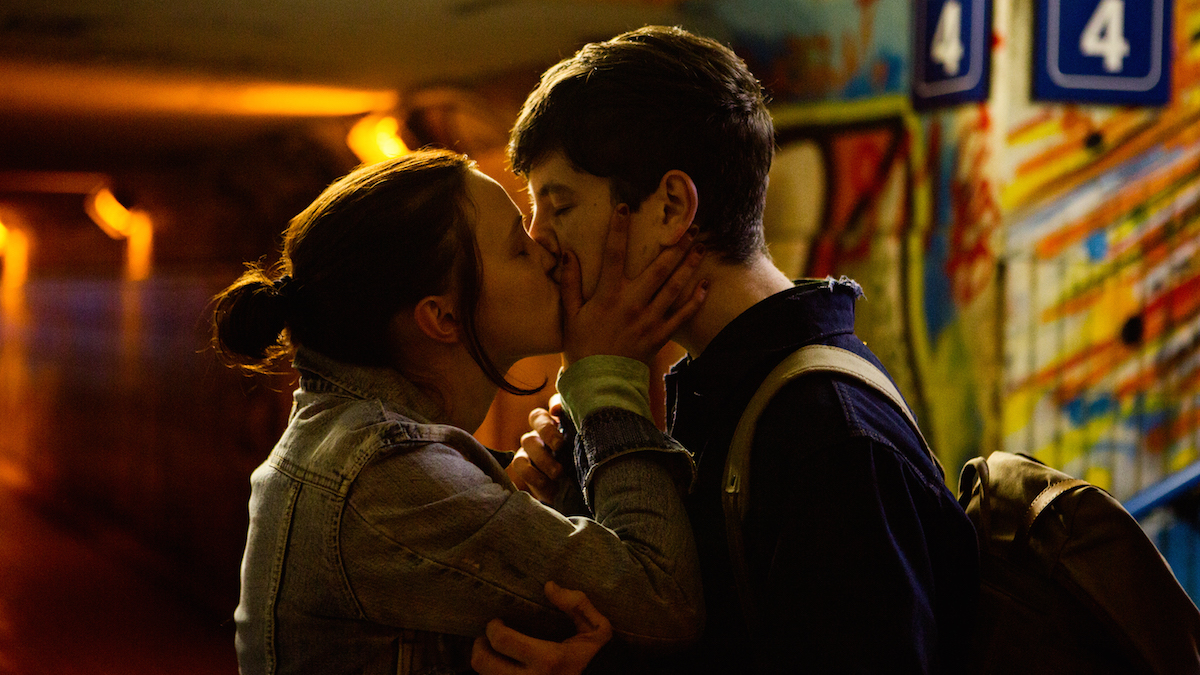Estonian gothic: inside the dark, folkloric world of Rainer Sarnet’s November

Estonian director Rainer Sarnet turns to his nation's folk legends for inspiration in eery new feature November. The Calvert Journal spoke to him at the film's international premiere at New York's Tribeca Film Festival.
Ramshackle farmhouses barely keep out the mud and a plague stalks the village in Estonian director Rainer Sarnet’s magic-laced allegory November. In a tough, animistic world where creatures shift shapes and wolves share snowy woods with ghosts, villagers must steal to get through the winter and supplement their meagre diets of willow bark, slush and bats. They enlist help with their thievery from Kratts, creatures with animal skulls or buckets for heads, brought to life from rusty scraps. The film is based on Andrus Kivirähk’s popular novel Rehepapp, a satire on greed written at the turn of the millennium, and woven from Estonian folk tales; elements Sarnet remembers from his “grandmother’s bedtime stories”. Shot in timeless black and white, November also has gifted cinematographer Mart Taniel and Polish electroacoustic composer Michał Jacaszek to thank for its eerie ambience. Every frame shimmers with life.
It’s not the first time Sarnet has shown idiosyncratic flair in adapting a classic. Not intimidated by the complex and phantasmagorical 19th-century work of Dostoevsky, he embraced bold stylisation and a punk twist in his 2011 version of The Idiot, in which parlour gatherings play out in candlelit gloom and the reprobate Rogozhin could just as well hold court in any modern dive bar with his fur coat and neck tattoos.
When we spoke to Sarnet ahead of November’s international premiere this week at New York’s Tribeca Film Festival, he said he regards literature as a spur for his own inspiration, not a source set in stone: “Reading is like having a conversation with the author. I don’t feel any obligations. If I’m attached to a book, I feel close to the author. It’s an unrestrained relationship on my part.” Inspiration comes primarily from one’s “own life and sensibilities”, which reading brings into focus. “After adapting The Idiot to film, I talked to a lot of people who are big admirers of the novel and realised that our perceptions of Dostoevsky don’t match. A film is my personal perspective and understanding, that isn’t related so much to the novel. The novel is there to help me verbalise, notice and clarify something that has been on my mind. It’s the same with November.” He also points to Rehepapp’s archetypal reverberations: “It’s bigger than just a novel. It’s a mythology with which each of us has personal associations – and not only Estonians, because folk tales about selling one’s soul are common to all cultures.”
At one point, villagers take their pants off and put them on their heads, under the belief that the plague won’t touch anyone it thinks has two backsides
Even if the film’s black-eyed ghosts are no more than metaphor, its story of the corrupting aspects of brutal pragmatism under hardship continues to have a strong resonance for a nation that’s frequently suffered invasion or occupation. “According to statistics, Estonia is one of the most atheistic countries in the world,” says Sarnet. “Animism as a religion didn’t spread here. But we have a great respect for nature. There is a heated debate going on about whether we should be chopping down our forests. Politicians, writers, philosophers, witches, even the president are involved. The forest is very important to Estonians because in difficult times it has been a refuge from war and famine. There is a saying: the forest is the poor man’s coat, meaning that you can always find warmth and food there.”
Superstition and supernatural thinking are the drivers of much droll surrealism in November. At one point, villagers take their pants off and put them on their heads, under the belief that the plague won’t touch anyone it thinks has two backsides. In another, villagers spit out Communion wafers outside the church for use as hunting bullets, convinced animals can’t resist being felled by the body of Christ. The pressure of survival and its reduction of interactions to cynical materialism leaves little place for more tender or spiritually expansive feelings; one local dismisses beauty as useless because it can’t be cooked in a pot to fill bellies.
“The author Andrus Kivirähk is a known atheist in Estonia,” says Sarnet. “He has a column in a daily newspaper written under the name ‘God’. That column irritates religious people, just like the novel Rehepapp exasperated them.” He adds that while the peasants of the book relate to supernatural phenomena solely out of self-interest, he wanted to lend more gravity to the spiritual motifs. “Both Christian and pagan mythologies deal with the soul; one that yearns for something that makes the pragmatic world bearable, and one that is ready, just like the main character Liina, for self-sacrifice.”
Still capable of romantic yearning and not yet numbed by base rapacity, farm girl Liina (Rea Lest) falls in love. But her love seems doomed because its object, fellow local Hans (Jörgen Liik), is consumed by an unrequited passion of his own. He’s obsessed with the German baroness who lives in the manor – a more “sick, decadent” strain of attraction, in Sarnet’s words – and sneaks through the moonlight to watch her sleepwalk every night on the roof. Desperate, Liina seeks the help of a witch.
“Both Christian and pagan mythologies deal with the soul; one that yearns for something that makes the pragmatic world bearable, and one that is ready for self-sacrifice”
Sarnet preferred to use inexperienced actors for many of the roles “so that their simplicity would be authentic”, explaining: “I didn’t want their performing to be too advanced or nuanced. A helpless person seemed more interesting than an actor playing a helpless person.” The more corrupted, dissolute figures connected to the manor are among the professional cast (including well-known character actor Taavi Eelma).
“In this film love is the main character’s state of being, her belief – not a real relationship,” says Sarnet. “Liina experiences a plethora of feelings, while always being alone. This is love. It is independent of everything, of time and society. It’s not romantic, nor is it blind. Being able to love your enemy is considered the biggest accomplishment of love. It’s not a feeling, but a behaviour. Everyone gets to feel love at least for a moment in their lives and this gives us a guide for how to behave towards other people; it teaches us to be loving. As soon as we stop behaving this way, life becomes pointless and unbearable.”
.jpg)
.jpg)
.jpg)
.jpg)
.jpg)
.jpg)
.jpg)
.jpg)

.jpg)
.jpg)
.jpg)
.jpg)


